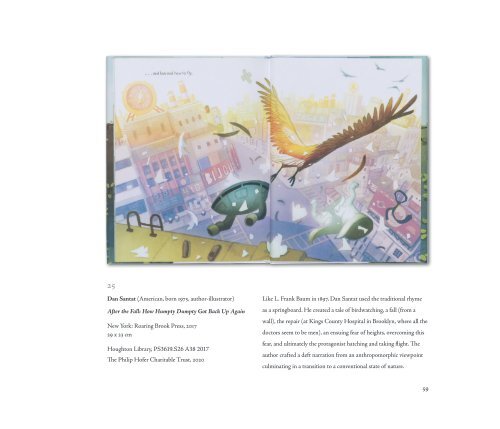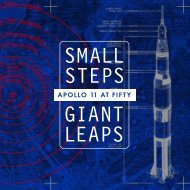Animals Are Us: Anthropomorphism in Children’s Literature; Celebrating the Peter J. Solomon Collection
Why do we tell stories to children through and about animals? Are there reasons why we shouldn’t? Animals Are Us invites explores these questions and more through influential historic examples of anthropomorphism in dialogue with contemporary books drawn from the collection of Peter J. Solomon (Harvard College Class of 1960, MBA 1963) and the holdings of Houghton Library. The exhibition invites you to engage critically with animal anthropomorphism, and delight in the artfulness of this enduring literary genre. Catalog of an exhibition on view at Houghton Library, Harvard University, September 1, 2021 - January 7, 2022.
Why do we tell stories to children through and about animals? Are there reasons why we shouldn’t? Animals Are Us invites explores these questions and more through influential historic examples of anthropomorphism in dialogue with contemporary books drawn from the collection of Peter J. Solomon (Harvard College Class of 1960, MBA 1963) and the holdings of Houghton Library. The exhibition invites you to engage critically with animal anthropomorphism, and delight in the artfulness of this enduring literary genre.
Catalog of an exhibition on view at Houghton Library, Harvard University, September 1, 2021 - January 7, 2022.
You also want an ePaper? Increase the reach of your titles
YUMPU automatically turns print PDFs into web optimized ePapers that Google loves.
25<br />
Dan Santat (American, born 1975, author-illustrator)<br />
After <strong>the</strong> Fall: How Humpty Dumpty Got Back Up Aga<strong>in</strong><br />
New York: Roar<strong>in</strong>g Brook Press, 2017<br />
29 x 23 cm<br />
Houghton Library, PS3619.S26 A38 2017<br />
The Philip Hofer Charitable Trust, 2020<br />
Like L. Frank Baum <strong>in</strong> 1897, Dan Santat used <strong>the</strong> traditional rhyme<br />
as a spr<strong>in</strong>gboard. He created a tale of birdwatch<strong>in</strong>g, a fall (from a<br />
wall), <strong>the</strong> repair (at K<strong>in</strong>gs County Hospital <strong>in</strong> Brooklyn, where all <strong>the</strong><br />
doctors seem to be men), an ensu<strong>in</strong>g fear of heights, overcom<strong>in</strong>g this<br />
fear, and ultimately <strong>the</strong> protagonist hatch<strong>in</strong>g and tak<strong>in</strong>g flight. The<br />
author crafted a deft narration from an anthropomorphic viewpo<strong>in</strong>t<br />
culm<strong>in</strong>at<strong>in</strong>g <strong>in</strong> a transition to a conventional state of nature.<br />
59



